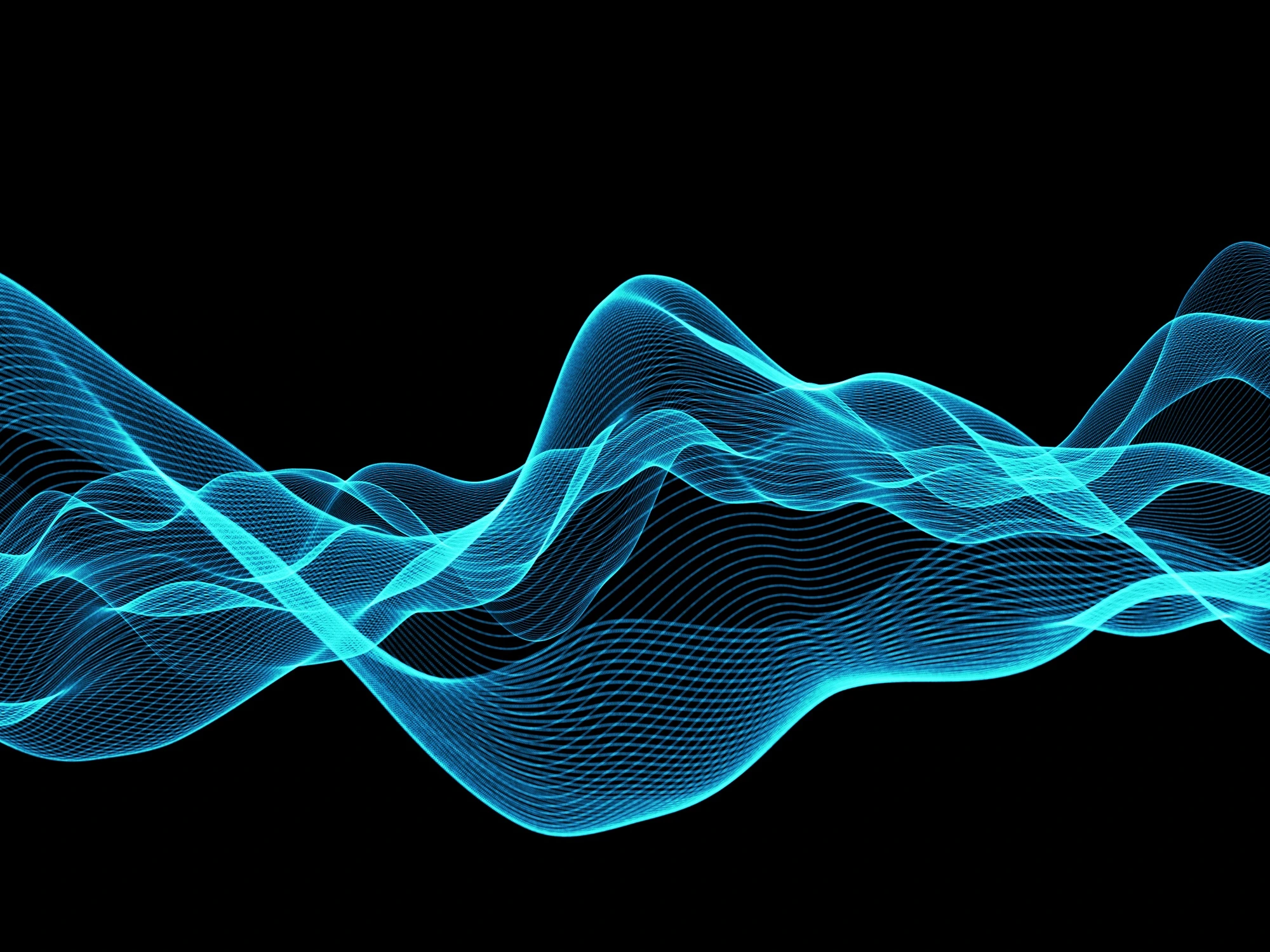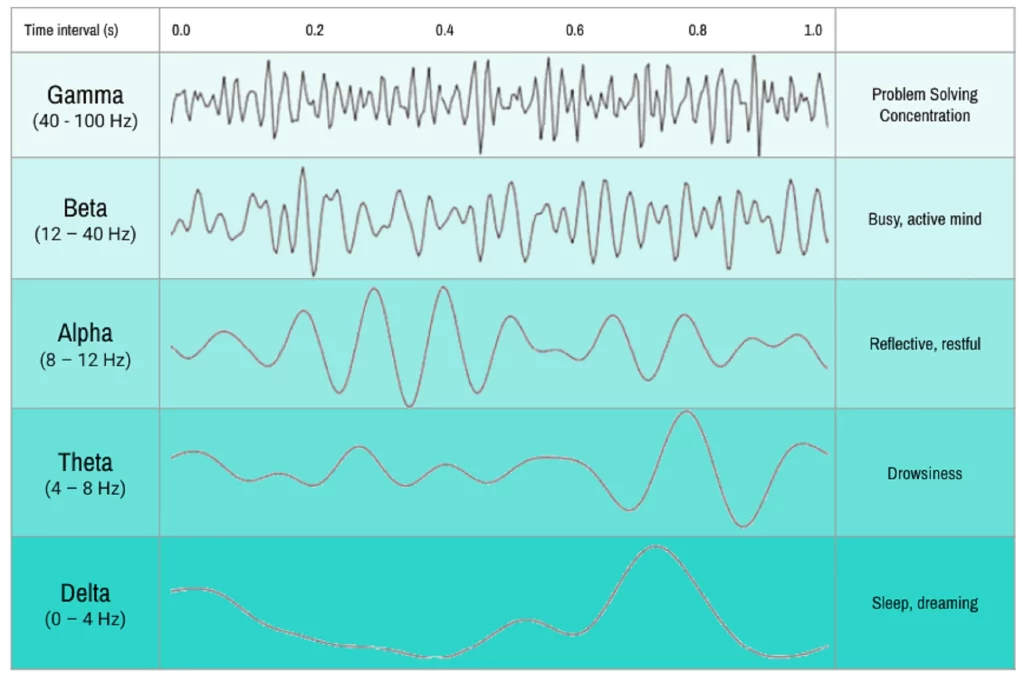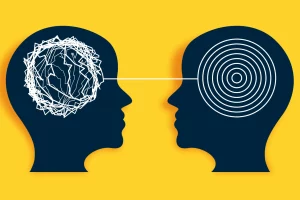
What are Brainwaves
Imagine on a peaceful Sunday morning, you are waking up to the sound of birds chirping outside your window. While you slowly open your eyes, you can see the gentle morning light filter through the curtains. you experience a state of relaxed wakefulness. Later, sipping your favorite coffee, you feel alert and focused. all day long our mindset keeps changing, from dreamy to wake-up, sad to happy, relaxed to anxious. Have you ever thought, about what exactly happens to your brain? Brainwaves is the concept behind this.
The brain is made up of cells that are called Neurons. There are millions of electrical pulses passing between neurons, that are transmitting signals to each other When those signals spread, clusters of neurons begin receiving feedback from each other, leading to a repeating cycle or rhythm, known as Brainwaves. That is a pattern of electrical activity that happens in our brain. According to Neuroscientists, brainwaves are neural oscillations. The electrical activity of the brain can be measured by placing Electrodes on the scalp, this medical test is called Electroencephalograph or EEG. These intriguing brain rhythms orchestrate our daily experiences, guiding our emotions, thoughts, and actions. Let’s dive deeper into the captivating world of brainwaves and how they play vital roles in our lives.
Types of Brainwaves and How They Impact Your Mental Health

Human brainwaves are classified into five categories. The brainwaves frequency (measured in Hertz or Hz), are different from each other. These waves range from the highest conscious level to the sleeping state. Let’s try to understand the differences:
| Brainwaves | Frequency | Brain State | |
| 1 | Gamma (γ) | Above 35 Hz | Concentration |
| 2 | Beta (β) | 12 Hz – 35 Hz | Anxiety-dominant, active, external attention, relaxed |
| 3 | Alpha (α) | 8 Hz -12 Hz | Very relaxed, passive attention |
| 4 | Theta (θ) | 4 Hz – 8 Hz | Deeply relaxed, inward-focused |
| 5 | Delta (δ) | 0.5 Hz – 4 Hz | Sleep |
Brainwave Frequencies Explained
-
- Gamma (γ)
The fastest human brain waves are the gamma waves. The frequencies of these waves measure above 35 Hz, which are associated with high-level cognitive processing, perception, and consciousness. Gamma brain waves are connected to complex cognitive processes like memory recall and the integration of information from various brain regions. When you are intensely focused or your brain is actively engaged in higher-order thinking, this is when your brain is likely producing Gamma Brainwaves, indications of acquiring the summit of concentration.
-
- Beta (β)
Beta waves are the most common brainwaves, predominant while you are awake, alert, and engaged. These waves measure above 12 Hz. These fast and vibrant waves are most prominent when we engage in active thinking, problem-solving, or simply going about our daily tasks. They are associated with alertness and intendness. Beta waves play a crucial role in cognitive tasks, problem-solving, and concentration. They are utilized in educational settings, professional environments, and other activities that require focused mental attention.
-
- Alpha (α)
Alpha brain waves, with their frequency ranging from 8 to 13 Hz, serve as a gateway, connecting the conscious and subconscious realms, and facilitating a seamless transition between them. During moments of deep relaxation or meditation, individuals often experience the alpha state of mind, fostering a harmonious connection between their inner and outer experiences. Alpha brainwaves promote a state of conscious relaxation, amplifying the power of the subconscious mind. Like a soothing melody for the brain, alpha waves gently guide the mind into a serene state, where worries and tension gently dissolve into calmness.
-
- Theta (θ)
Theta waves are observed during light sleep, relaxation, meditation, and creative states. They are also linked to memory consolidation and can be seen in some meditative practices. Theta waves representing a frequency range of 4 to 8 Hz, are gentle brain rhythms linked to profound relaxation, often felt before sleep, during meditation, or when fully at ease. This serene state unlocks vivid visualizations, and memories, and blurs the boundary between reality and fantasy, creating a realm of deep reverie. Theta brain waves activate and optimize the body and mind’s natural self-healing processes.
-
- Delta (δ)
Delta Brain waves are the slowest brain waves that have a frequency of 0.5-4 Hz and are prominent during deep sleep or dreamless sleep. These waves are essential for restorative sleep, bodily healing, and overall regeneration. Delta waves are dominant in infants, especially during the early stages of brain development. Experienced meditators often show increased delta activity during their practice. This may indicate a deep state of relaxation, mindfulness, and heightened awareness.
How Jose Silva Exhibited Human Brainwaves: The Scientific Language of The Brain

In the bustling world we inhabit, finding moments of tranquility and relaxation is becoming increasingly challenging. Jose Silva, a brilliant innovator and a man way ahead of his time recognized the potential of the human brain as a powerful tool for achieving inner peace and harmony. Through extensive research and experimentation, Silva harnessed the power of brainwaves to develop a groundbreaking technique for relaxation meditation.
Jose Silva’s self-help method, widely known as the Silva Method or Silva Mind Control, was founded in the 1960s. He recognized that by shifting the brain’s dominant brainwave frequency to Alpha and Theta, one could access heightened states of relaxation and self-awareness and unlock heightened intuition and creativity. By quieting the mind through meditation, individuals could tap into their inner wisdom, enabling them to make better decisions and solve complex problems.
The Alpha Sounds
Imagine entering a tranquil state of mind, where chaos transforms into harmony and inner empowerment. This state of conscious relaxation and empowerment can be achieved through the captivating power of alpha sound frequencies.
The alpha frequency itself is beyond the grasp of human hearing. Jose Silva used an audio generator set at 600 cycles per second and broke the sound 10 times per second. By recording this, Silva has created a comparable effect to the brain’s output converted into sound, known as the alpha sound. In essence, it closely resembles the brain’s alpha frequency when translated into an audible form. These enchanting melodies lead us into deep meditation, unlock our subconscious, and foster inner harmony, empower our core essence.
Step into this enchanting world of alpha sound, and you’ll discover a path to conscious tranquility and profound self-awareness, where the mind and spirit unite in perfect harmony.
The Theta Sound
Just like Alpha waves, in a direct sense, Theta waves are also not audible to us. Jose Silva promoted a technique to interpret theta waves audibly through the Theta Sound. The Silva Mind Control Courses allow individuals to incorporate Theta Sound as background audio to enhance deep relaxation during meditation. It’s a technique you can practice and enjoy while meditating.
In the Theta state, the human mind enters a neutral zone. Embracing the present moment, the mind gracefully detaches from external disturbances. In this harmonious state, the daily chaos dissolves, replaced by a profound sense of centeredness and peace.
Theta state of mind promotes a deep sense of centeredness and tranquillity. There are various meditation and relaxation techniques in the Silva Method courses that will help you to enter the Theta level.
Binaural Beats: What are They and What are The Benefits?

Binaural beats are considered auditory illusions, created when two slightly different frequencies are played separately in each ear. When two different frequencies are playing together the human brain perceives a third frequency, that is the difference between the two frequencies. For example, if a 430 Hz frequency is played in one ear and a 410 Hz frequency is played in the other ear, the brain will perceive a binaural beat of 20 Hz (430 Hz – 410 Hz = 20 Hz).
To generate a binaural beat, both tones’ frequencies must be below 1000 Hz, and the difference between the frequencies of the two tones cannot exceed 30 Hz. Some common health and mental benefits of Binaural beats are:-
-
- Increased thinking power and creativity
- Reduced stress, anxiety, and improved mood
- Helping you enter a meditative state and gradually drive into a deeper level
- Cure Sleeping problems
- Helping to flourish concentration and memory capacity
Moreover, Binaural beats should not replace professional medical care. If you have medical or psychological conditions, consult a healthcare professional before incorporating them into your wellness routine.
The Benefits of Meditating with The Brainwaves or Sounds

-
- Brain waves or sound frequencies promote relaxation and reduce stress, anxiety, and depression.
- Create an environment for the body to restore and rejuvenate itself naturally.
- Enhance intuitive abilities that allow individuals to tap into their inner wisdom and make better decisions in various aspects of life.
- Help to master the Art of Meditating at Deeper Levels.
- Flourish the life you want too effortlessly.
- Helps to awaken the full potential of the mind.
- Promotes a sense of inner peace.
- Flourish a sense of calmness, balance, and overall well-being.
Jose Silva’s pioneering work in utilizing brainwaves for relaxation meditation has had a profound impact on countless individuals seeking inner peace and personal growth. By utilizing his approach, individuals have unlocked the profound potential of their minds, enabling them to gracefully overcome life’s obstacles with a newfound sense of serenity. The Silva Method practices aim to restructure human minds, leading to dense transformations in their lives. Regularly participating in these established techniques can bring about substantial changes in our outlook on life. So, take a moment, close your eyes, and embark on a journey of self-discovery with the Silva Method Courses.
Some Frequently Asked Questions About Brainwaves
Understanding Brainwaves
Brainwaves are rhythmic electrical patterns generated by the brain when it is active. These waves reflect the collective activity of billions of neurons communicating with each other through electrical signals.
What Are the Different Types of Brainwaves?/UNDERSTANDING BRAIN WAVES: BETA, ALPHA, THETA, DELTA + GAMMA
Human brainwaves are classified into five categories:-
Gamma (γ): These are the fastest brainwaves, associated with higher-level cognitive processes, concentration, and problem-solving.
Beta (β): Beta waves are typically observed when the brain is in an active, alert, and focused state.
Alpha (α): Alpha waves are observed when the brain is in a relaxed and calm state, such as during meditation
Theta (θ): Theta waves are linked to deep relaxation, creativity, dreaming, meditation, and the early stage of sleep.
Delta (δ): These are the slowest brainwaves, are usually present during deep sleep, and are associated with restorative and healing processes.
What is the Purpose of Theta Brain Waves?
Theta brainwaves are prominent during the early stages of sleep, especially during the transition from wakefulness to sleep. These waves are crucial for memory consolidation and learning processes. Theta waves are associated with meditative states and mindfulness practices. Increased theta activity may reduce levels of stress and anxiety.
How to Generate Brain Waves?
We cannot consciously generate brainwaves in the same way you might generate physical actions. Brainwaves are natural electric rhythms that occur in the brain. However, there are certain activities like deep breathing, closed-eye visualization, and mindfulness meditation that can influence the frequency of brainwaves being produced.
What to Know About Gamma Brain Waves?
Gamma brain waves have a higher frequency compared to other brainwaves. They are the fastest brainwaves. Gamma waves are linked to higher-order cognitive functions, such as memorizing, concentrating, learning, and problem-solving.
How to Manipulate Brain Waves for a Better Mental State?
To manipulate brain waves for a better mental state, try to practice mindfulness meditation, deep breathing exercises, and binaural beats. These methods can help regulate brain wave patterns, leading to reduced stress, improved focus, and enhanced overall mental well-being.
What is the Stress, Anxiousness, and the Brain Wave Connection?
The connection between stress, anxiousness, and brain waves involves the brain’s electrical activity. High-stress levels and anxiety can lead to increased beta activity. This can impact cognitive functions, memory, and emotional regulation. Meditation and relaxation can help reduce stress and anxiety, leading to more balanced brain wave activity and improved mental well-being.
How do brain waves enable creative thinking?
Brain waves play an important role in enabling creative thinking. During creative tasks, the brain shifts into a state of enhanced alpha and theta waves, associated with relaxation and imaginative states. These waves facilitate the connection between different brain regions. Theta waves promote a conducive environment for generating unique and innovative ideas.
Tag:alpha brain waves, alpha meditation, alpha state meditation, alpha state of mind, alpha waves, alpha waves music, alpha waves sleep, beta waves, brain wave states, Brain Waves, brain waves during sleep, brain waves for studying, brain waves frequency, brain waves types, deep sleep waves, delta brain waves, delta brain waves while awake, delta wave, different types of brain waves, different types of brain waves human brain waves brain wave patterns brain frequency music brain sounds alpha state and subconscious mind, gamma beats, gamma brain waves, gamma waves frequency, meditation brain waves, mind waves, rem sleep waves, sleep waves



